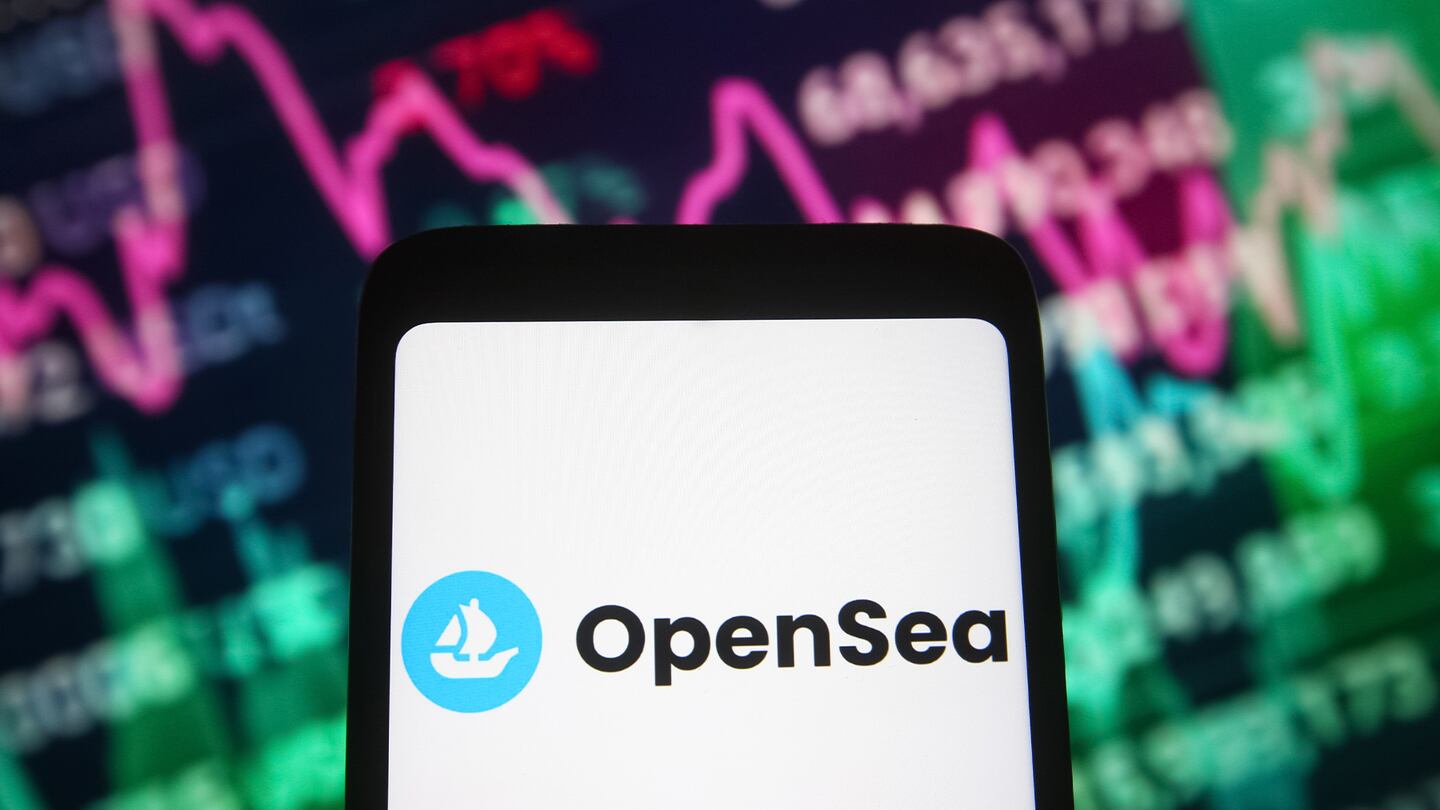
The Business of Fashion
Agenda-setting intelligence, analysis and advice for the global fashion community.

Agenda-setting intelligence, analysis and advice for the global fashion community.

Talk about mixed signals.
On May 3, just two days after OpenSea, the largest NFT marketplace, saw a record $476 million in trading in a single day, The Wall Street Journal, citing a different set of data, proclaimed in a headline that the NFT market was “flatlining.”
It was like two separate realities had been built around crypto assets, whether the non-fungible or the fungible kind, meaning cryptocurrencies like Ether and Bitcoin.
Gucci just said it would begin accepting select cryptocurrencies at some of its US stores, with plans to expand the programme across North America, suggesting confidence in the long-term viability of the market. At the moment, however, that market seems on the verge of a genuine crash rather than one of its periodic convulsions. The bottom practically fell out beneath so-called stablecoin TerraUSD, Bitcoin has lost more than half its value since November and the cryptocurrency exchange Coinbase reported a large quarterly loss and a drop in monthly users.
ADVERTISEMENT
Coinbase’s new NFT marketplace, which was supposed to compete with OpenSea, also landed with a thud when it opened to the public this month, recording only 150 transactions.
And yet Instagram just revealed it will test letting creators and collectors share their NFTs on the platform — arguably a big step toward taking NFTs mainstream.
Depending which angle fashion brands look from, right now NFTs can seem like an opportunity they’re just beginning to tap or a short-lived fad already entering terminal decline. Which is it?
It is possible to reconcile these different realities. OpenSea did see a surge in trading that day — the result of the launch of NFTs representing land in Otherside, the new virtual world by Bored Ape Yacht Club, which is probably the biggest name in NFTs right now. The sale created so much traffic it clogged the Ethereum blockchain.
But it was also a one-off event that isn’t necessarily replicable by other NFT projects. In its article, The Wall Street Journal cited data from NonFungible, an NFT market tracker, that showed sales of NFTs were down 92 percent that week compared to their peak in September.
Even so, it may be too much to say the market is collapsing. NonFungible itself took to Twitter to say the market was merely stabilising after the frenzy of last year. And as many market watchers quickly pointed out, other data sources, such as Dune Analytics, show a different picture where plenty of transactions continue to take place and the market is still sizeable.
One change that does appear to be taking place, though, as some analysts have noted, is that the market is starting to consolidate around proven “blue-chip” projects, like those bored apes. The days when seemingly any NFT collection, no matter how silly or lacking in obvious merit, seemed set to flourish may well be behind us.
For fashion brands, the big takeaway from the last couple weeks is that they shouldn’t expect their NFTs to automatically become ultra-valuable assets, even if Dolce & Gabbana’s NFT collection generated $6 million in sales last year and Adidas’ “Into the Metaverse” NFTs still trade for more than $2,500 each as of this writing.
ADVERTISEMENT
“My advice to anyone purchasing NFTs right now is to buy things you love and not focus on the price, because the majority of these projects will go to zero,” Gaby Goldberg, an investor at TCG Crypto, told me in October when I talked to her for a story about the wave of NFT sales happening at the time.
Fashion brands that want to get into NFTs should focus on creating things their customers will love — and the better NFT strategy anyway is probably to use them to engage actual fans of the brand rather than creating a short-term draw for crypto speculators.
To do that, they may want to consider how to make their NFTs more than just digital collectables. Brands like Gucci, Kenzo and The Hundreds have been leveraging their NFTs as a form of loyalty programme, using them as a way to reward holders with special perks like early access to products, or in The Hundreds’ case, giving holders royalties on sales of products featuring their NFTs.
“The trend is moving towards giving them utility, so that they can be used within metaversal virtual worlds or to unlock next-gen loyalty rewards from desirable brands,” Brian Trunzo, a fashion veteran and now metaverse lead at Polygon Studios, the consulting arm of the Polygon blockchain, recently told me. “If they don’t have utility — if they are just collectables — they will become akin to the stuff that you find in your junk drawer.”
The extraordinary expectations placed on the technology have set it up for the inevitable comedown. But that’s when the real work of seeing whether it can be truly transformative begins.
Successful social media acquisitions require keeping both talent and technology in place. Neither is likely to happen in a deal for the Chinese app, writes Dave Lee.
TikTok’s first time sponsoring the glitzy event comes just as the US effectively deemed the company a national security threat under its current ownership, raising complications for Condé Nast and the gala’s other organisers.
BoF Careers provides essential sector insights for fashion's technology and e-commerce professionals this month, to help you decode fashion’s commercial and creative landscape.